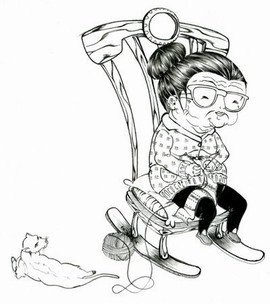 Who grants the wishes of expecting moms?
Who grants the wishes of expecting moms?
For many Chinese, bearing children and continuing the family line has been seen as the most important aspect of life for thousands of years. According to one saying, 不孝有三, 无后为大(bú xiào yǒu sān, wú hoù weí dà), the worst of the three types of filial irresponsibility is to leave no descendents. (It’s less clear what the other two are.)
Today, the majority of Chinese parents-to-be treat pregnancy just as Westerners do; they make lots of trips to the doctor, devour pregnancy books and fret over the mother and baby’s health. Still, because a woman’s position in her family has historically been determined by the number of children she bore, it’s no surprise that ancient birth myths and pregnancy customs have continued to thrive.
In Fujian province, Ma Zu, the goddess of sailors and pregnant women, still holds sway over expecting couples. During the Ma Zu annual festival, parents snatch up the flowers scattered around her statue: a red flower to wish for a girl, white for a boy.
Another custom that has endured in parts of China is the tying of “mud children” at the temples of Guan Yin, who is perhaps the most beloved fertility goddess in China. Hopeful parents wrap red ribbons around the mud statues and take them home. In the north of China, the goddess is honored with intricate paper cuttings.
Even if hopeful parents don’t go to a temple, they might still hold fast to some of the traditional beliefs. For instance, if a pregnant belly is round rather than pointed, the mother’s probably carrying a girl. If a woman has a hankering for sour food, then the baby’s a boy. During the Mid-Autumn Festival, it’s customary to give new couples gifts of melon and calabash, which are associated with fertility because they have many seeds.
Under traditional beliefs, a panoply of goddesses protect women and fertility. In addition to Ma Zu and Guan Yin, there’s also Nü Wā ( 女娲), considered the creator of the human race, who shaped human beings out of mud and water from the Yellow River. She helped humans conquer floods and fight wild animals. Nowadays, worshippers pray to her in Hebei and Henan province in the spring. Gāomóu (高谋女神) is the mother of the earth; she was so powerful that an emperor in the Qin Dynasty took his empresses to sacrifice cows, sheep and pigs to Gaomou in hopes of having more children.
Then there’s the qilin (麒麟), a mythical beast with the body of a deer, the tail of a cow and a covering of scales. Since Confucius was born after a qilin supposedly visited his parents’ house, people believed the animal had the power to send children to families. In some areas of China, they dress as this mysterious creature at festival time.



